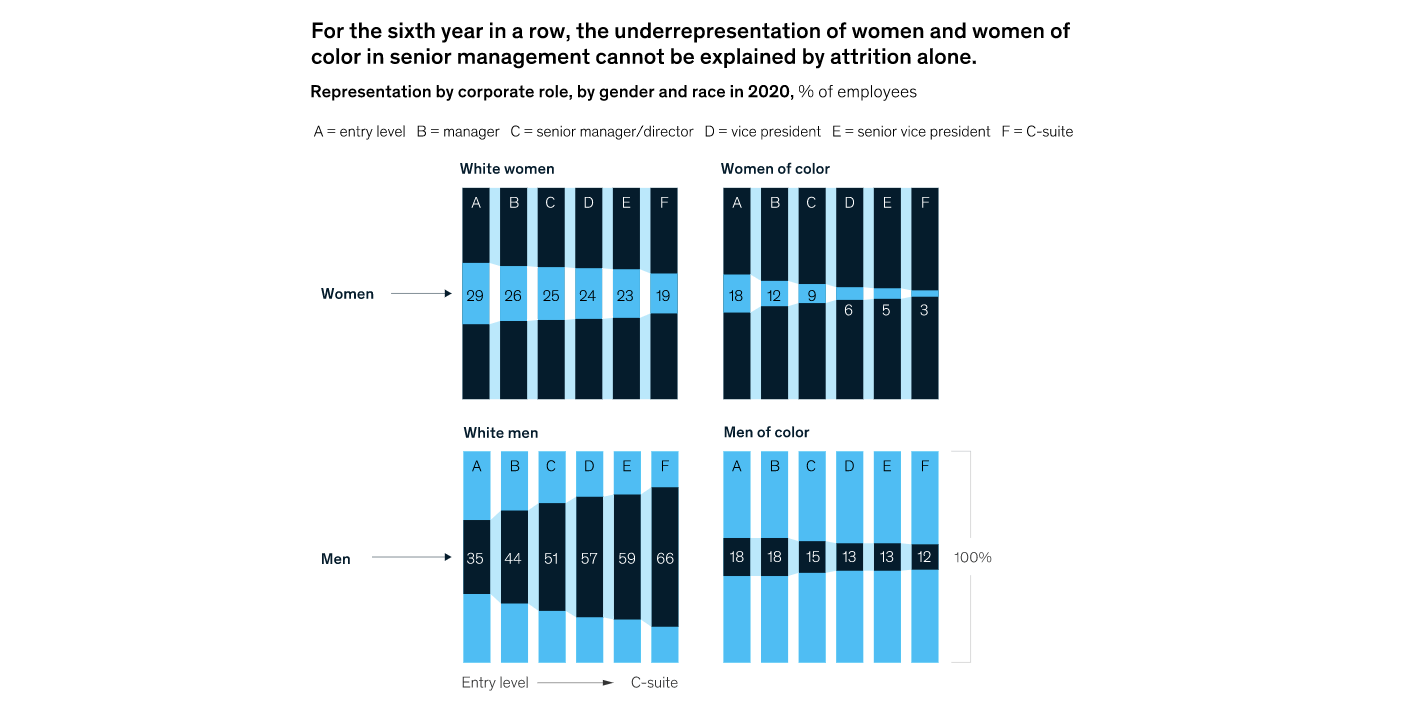Read this excerpt from a recent McKinsey report:
“Research shows that company profits and share performance can be close to 50 percent higher when women are well represented at the top. Beyond that, senior-level women have a vast and meaningful impact on a company’s culture. They are more likely than senior-level men to embrace employee-friendly policies and programs and to champion racial and gender diversity: more than 50 percent of senior-level women say they consistently take a public stand for gender and racial equity at work, compared with about 40 percent of senior-level men. And they’re more likely to mentor and sponsor other women: 38 percent of senior-level women currently mentor or sponsor one or more women of color, compared with only 23 percent of senior-level men.
If women leaders leave the workforce, women at all levels could lose their most powerful allies and champions.”
Now ask yourself: How does this information INCREASE sexism?
Do you see the problem? Data creates and reinforces belief systems about identifiable groups.
Racism, sexism, and ageism exists because bias exists. We all have biases. ALL OF US! Sometimes they are based on sound data (like that above), but often they are not. And we must be mindful that generalizations will not apply to everyone; People are offended when we classify them into a box of expectations.
However, if we attempt to interact with every person as a unique individual giving them full attention, we will be exhausted before finishing our first coffee. If you’ve ever run interviews where you are really trying to get to know each person, you know how tiring it is.
You can name a ton of common conceptions about men, women, Blacks, Asians, Canadians, and Filipinos. Some are generally true, and many are not. They are in your head and they do have influence.
Biases are cognitive shortcuts that make it easier to interact with people and make the onslaught of cues and inputs manageable. They prevent overwhelm. They can also be horribly demeaning.
That’s why people struggle with change at times. Trying to figure out how to respond to something new (“A detour? How will I get to my meeting on time?”) takes more mental energy. It disrupts our expectations and comfy routine.
Many don’t want their expectations challenged. But that’s the key to resolving racism and sexism. It’s the foundation for learning and innovation.
In a recent conversation with a CEO we discussed the importance of curiosity in promoting diversity. A willingness to learn, to have our biases challenged, and extend grace towards others when they misstep is fundamental to changing the way we work together, collaborate, and succeed.
These are also the keys to develop a culture tuned for ongoing change.
Diversity courses will not solve racism and sexism. A change of heart and mind will.
I’m working with organizations to help leaders uncover hidden bias and build cultures of curiosity, inclusiveness and unbound innovation. I can do that for you, too.



